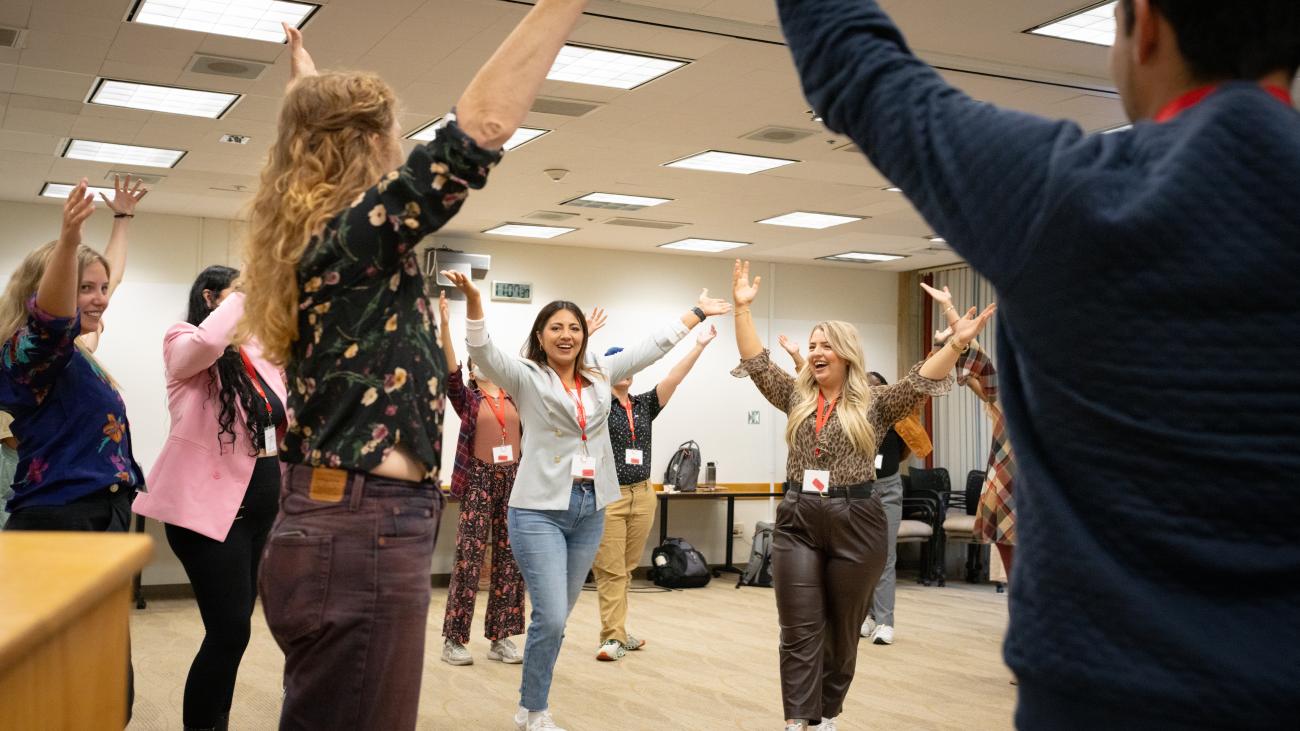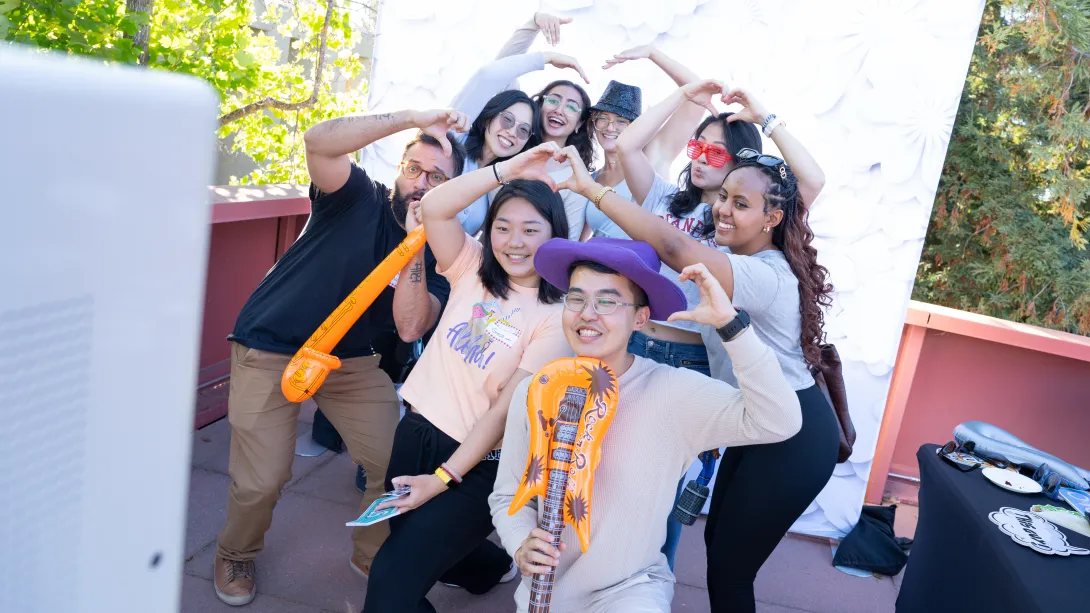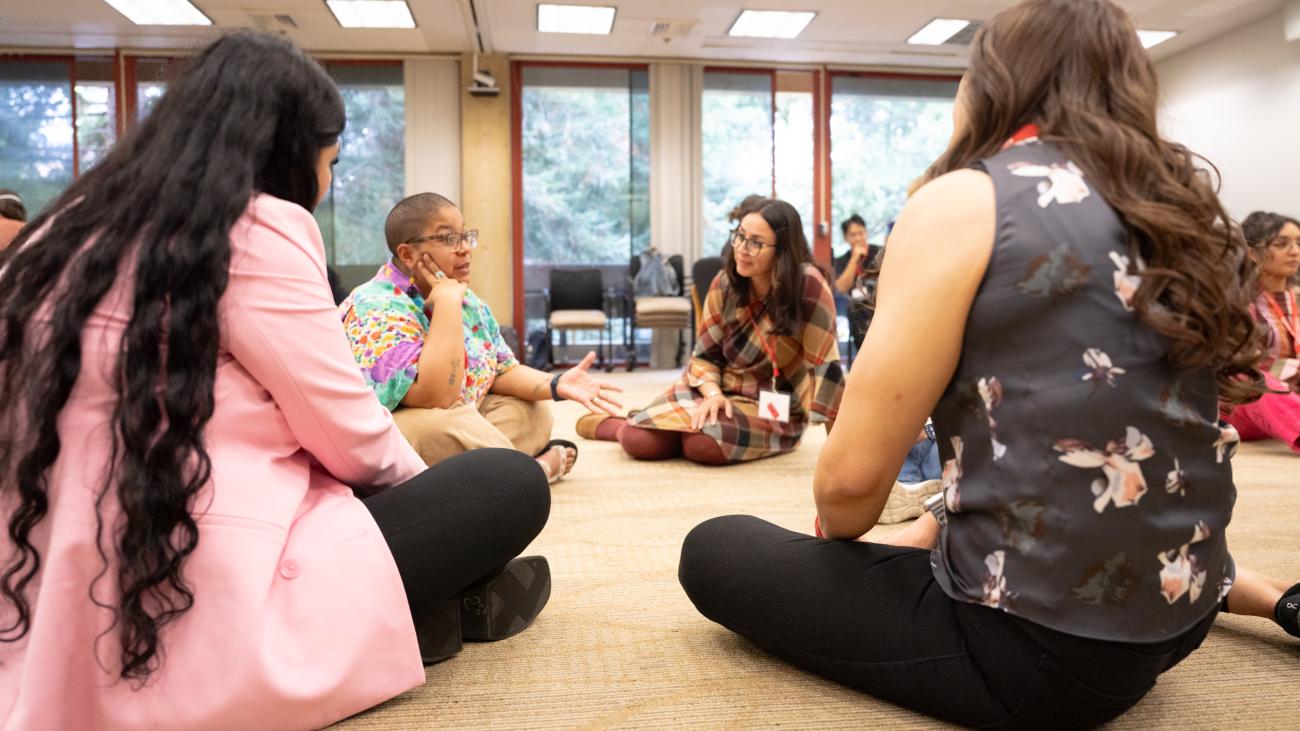
Collaboration is key: New education students build a community bound by purpose
When Carter Cote was a high school student in Santa Clarita, Calif., one of his greatest accomplishments was building a career exploration website that connects students in rural areas to resources that would help them secure their dream jobs.
However, just before his school district was about to acquire it, Cote shuttered the project.
“The problem with that solution is that it was a library that literally gets outdated every year because jobs are changing all the time,” said Cote, who is a master’s student in Stanford Graduate School of Education’s (GSE) Learning Design and Technology (LDT) program.
“The only way that people adapt is through other people, through social capital and cultural capital,” he said. “Here I want to learn how to build something in AI that gets rid of all the friction that existed in that first solution.”
Cote is one of several students who joined the GSE this fall hopeful they will effect positive change in education through teaching, policy, technology, and other levers for academic and professional success.
The new cohort includes 24 doctoral students and 121 master’s students, 57 of whom started in the Stanford Teacher Education Program (STEP) over the summer.
GSE Dean Dan Schwartz, in an address to students during new student orientation, said many at the school have the same overarching goal even if there are different ways to achieve it.
“What matters most is that we all want to get to the same place, which is where all learners are prepared to thrive,” he said.
Professor Anne Charity Hudley, associate dean of educational affairs at the GSE, offered another bit of advice during new student orientation: stay true to yourself.
“I would like students to keep a sense of all of the experiences they’ve had so far that brought them to this place and how those experiences have helped shape their values,” said Charity Hudley. “I hope they keep that sense of self and who they are with them — we need to all learn from each other in that way.”

PhD students participate in an improv session as part of new student orientation. (Photo: Joleen Richards)
Connection builders
Mychaela Anderson, STEP ’25, sees her year in the teaching program that combines class time at Stanford with instructional time at a local school as a period of growth. She’s looking for skills that will help her teach with intention and for the long haul.
“One thing that has been on my mind a lot is what it means to be a resilient educator,” said Anderson, who is originally from Honolulu.
She says she leans on the varied perspectives among her peers for support and insight.
“Something I’ve been learning about with my cohort is this concept called thick solidarity, where we think about how we can build connections because of our differences rather than in spite of them,” she said. “It’s something I’ve really been holding with me in my interactions with a lot of my peers that’s really been framing my time here.”

New students pose with props at the photo booth station during the dean’s fall kickoff barbecue event. (Photo: Joleen Richards)
Solution seekers
Tonya Murray, LDT ’22, is returning to Stanford for her PhD in Learning Sciences and Technology Design (LSTD) after working as a research coordinator with Stanford’s Rapid Online Assessment of Reading project, or ROAR, which assesses foundational reading skills under the Stanford Reading & Dyslexia Research Program.
“I got into this field because I have a child who was successfully remediated from dyslexia,” said Murray, who is originally from St. Louis, Mo., and previously worked as a software engineer. “So I’m really interested in how our schools can support all students to learn to read.”
Her goal is to learn how to better translate some of the cognitive research she’ll gather over the next five years into practices that will be used in schools.
“I’m really interested in foundational reading because I think it’s a fundamental right that every kid in the country learns to read,” she said.
Blake Castleman, a fellow LSTD student, plans to find ways to use AI to enhance teaching and learning, and to create tools for students and educators.
“Currently with AI, I feel like a lot of people overemphasize and try to incorporate it into tools where it might not be needed or be inefficient,” said Castleman, who received his master’s in computer science from Columbia University last year. “I’m really hoping to be an integral part in pragmatically using these tools in education in ways that really benefit everyone.”
He will use his time at the GSE to gain more knowledge of the learning sciences, and make use of his exposure to professionals and thought leaders in other facets of education to try to create holistic solutions.
“In a place like the GSE, where there could be a lot of different perspectives on how to implement an idea, action or policy, you really have to listen to your colleagues and ask why when you don’t understand where they’re coming from,” he said.

PhD students sit on the floor to share personal stories during an improv session as part of new student orientation. (Photo: Joleen Richards)
Lifelong learners
Yue Ma joins the GSE’s Social Sciences, Humanities, and Interdisciplinary Policy Studies in Education (SHIPS) doctoral program this fall for what will be his second PhD.
Prior to starting with the new cohort in September, he spent four years working as a researcher with Stanford’s Rural Education Action Program (REAP), where he used his background in economics to conduct field experiments that will benefit the children of China’s rural poor population.
“Gradually I realized that the things I was doing were becoming less challenging, and I hit a limit where I saw that I needed to improve,” said Ma, who is originally from the Shaanxi Province in China. “I want to gain the ability to come up with cutting edge and important research questions to help the poor.”
Despite working in academia “for a long time,” Ma says he’s looking forward to enjoying every opportunity to learn and interact with different opinions on how to improve education.
“Right or wrong, politics or research, I just want to practice engaging in a way that’s not so black and white,” Ma said. “This means gently speaking up about my opinions and fundamentally giving myself more compassion when it comes to being challenged.”
Similarly, Cote anticipates hearing from educators on what challenges are most prevalent in the classroom.
“What I’m excited about this year is finding people who are authentically passionate about the problems we’re solving,” he said. “That civil discourse between people on different sides of an issue is what actually creates the solution.”
Faculty mentioned in this article: Dan Schwartz , Anne Harper Charity Hudley



